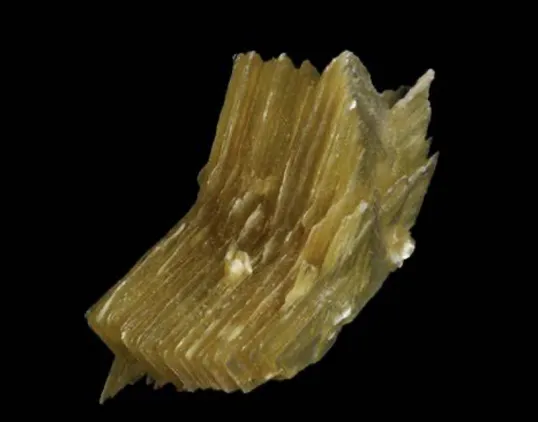Phlogopite vs Muscovite Mica Key Differences in Heat & Insulation Properties
- Fundamental differences between phlogopite and muscovite mica
- Technical specifications and performance data comparison
- Operational advantages and industrial applications
- Leading manufacturers and material grade analysis
- Custom solutions for specific operational requirements
- Industry implementation case studies
- Material selection criteria for engineering projects

(phlogopite vs muscovite)
Understanding the Core Differences Between Phlogopite and Muscovite
Phlogopite and muscovite represent two primary mica minerals with distinct geological compositions affecting their industrial performance. Phlogopite contains magnesium and aluminum silicate with a chemical formula of KMg3(AlSi3O10)(OH)2, while muscovite features potassium-aluminum silicate with the composition KAl2(AlSi3O10)(OH)2. These structural variations create measurable differences in physical properties:
Thermal tolerance showcases the most significant divergence, where phlogopite withstands temperatures exceeding 1000°C before decomposition - approximately 40% higher stability than muscovite. Electrical resistivity measurements indicate phlogopite maintains 1015 Ω·cm at 500°C compared to muscovite's 1013 Ω·cm at equivalent conditions. The cleavage characteristics differ as well; muscovite produces thinner sheets (0.025-0.125mm thickness) compared to phlogopite's robust plates (0.15-0.30mm standard), impacting flexibility versus durability choices.
Technical Specifications and Performance Metrics
The dielectric strength comparison reveals crucial engineering data for electrical applications. Standard grade phlogopite demonstrates 100-150 kV/mm breakdown strength at 20°C, maintaining 85-100 kV/mm at 700°C. Muscovite grades show superior initial performance (160-190 kV/mm at 20°C) but experience 55-65% reduction at temperatures above 600°C. This thermal stability differential directly influences component lifespan in thermal cycling environments, where phlogopite-based insulators typically achieve 1.8× longer service life than muscovite equivalents.
Chemical resistance testing shows significant variations in material durability after acid exposure. After 48 hours in 25% sulfuric acid, phlogopite retains 95% of its original tensile strength versus 78% for muscovite. Alkali resistance profiles are more favorable for muscovite, which shows <5% mass loss after sodium hydroxide exposure compared to phlogopite's 11-14% loss. These divergent resistance profiles necessitate careful consideration for applications encountering aggressive chemistry.
Operational Advantages and Industrial Applications
Phlogopite's thermal advantage makes it indispensable for high-temperature environments including combustion chambers, induction heating components, and aerospace thermal barriers. Its temperature endurance prevents delamination in thermal cycling conditions below 900°C. Automotive manufacturers utilize phlogopite-reinforced composites in turbocharger heat shields, achieving 30% mass reduction compared to metallic alternatives while maintaining thermal protection.
Muscovite provides superior performance in room-temperature applications requiring thin, flexible dielectric barriers. Its exceptional flatness and surface uniformity support precision applications like high-frequency capacitors, where sub-micron thickness consistency ensures stable performance in RF circuits below 500°C. Consumer electronics increasingly employ muscovite-based barriers in battery separators and circuit isolation layers, leveraging its combination of electrical resistance and mechanical integrity.
Manufacturer Comparison and Material Grades
The following table compares specifications from leading manufacturers:
| Manufacturer | Material Grade | Thickness Range (mm) | Dielectric Strength (kV/mm) | Temp Limit (°C) | Industry Applications |
|---|---|---|---|---|---|
| VonRoll Insulation | Phoenix-MG205 | 0.05-0.30 | 135-145 | 1050 | Aerospace, Power Electronics |
| Spruce Pine Mica | MicaFlex-80 | 0.02-0.12 | 165-175 | 750 | Capacitors, Electronics |
| Gee Graphite | ThermBond-7X | 0.08-0.35 | 115-130 | 1000 | Foundry Equipment |
| Industrial Minerals | UltraClear-45 | 0.03-0.10 | 170-185 | 700 | Optical Sensors |
Premium grades like Phoenix-MG205 contain chemically bonded ceramic additives that improve compressive strength by 60% compared to standard compositions. These advanced formulations typically command 25-40% price premiums but deliver extended service life in critical environments.
Customization and Engineering Solutions
Manufacturers offer tailored engineering solutions for demanding applications through:
- Surface treatments: Silane coatings improving adhesive bonding by 200%
- Hybrid composites: Phlogopite-muscovite layered designs optimizing cost/performance ratios
- Reinforced grades: Aramid fiber backing providing 500% tear resistance improvement
- Density optimization: Controlled compression during manufacturing yielding 0.05mm precision
These modifications directly address application-specific challenges. For example, resin-saturated phlogopite grades maintain dielectric integrity above 800°C in generator end-windings, extending maintenance intervals from 24 to 48 months. Thickness-tapered muscovite sheets enable precision capacitor winding with 98% material utilization versus 85% with standard blanks. Custom engineered solutions typically increase component costs by 15-30% but yield lifecycle savings between 40-65%.
Application Case Studies
A photovoltaic inverter manufacturer switched from muscovite to reinforced phlogopite in thermal management pads after field studies revealed higher failure rates in desert installations. The material transition decreased thermal shutdown incidents by 82% despite higher ambient temperatures. Production analysis confirmed 28% lower replacement costs over the 10-year product lifecycle.
Industrial motor designers achieved 18% smaller footprint in Class H insulated motors by utilizing proprietary multi-layer phlogopite tapes that maintained dielectric strength at 20% reduced thickness. Testing confirmed equivalent thermal performance at 800°C with improved heat transfer through the thinner material profile.
Semiconductor wafer handling equipment underwent durability improvements with custom-formulated muscovite bearing pads. The precision surface finish maintained ±0.001mm flatness while handling abrasion increased from 3,000 to 50,000 cycles before replacement. This reduced unplanned downtime by 68% in continuous manufacturing environments.
Determining Optimal Material Selection Criteria
The decision between phlogopite and muscovite depends on application environment and performance priorities. Utilize phlogopite mica for:
- Operations above 700°C requiring thermal stability
- High-stress mechanical conditions demanding structural integrity
- Acidic chemical environments
Select muscovite for:
- Precision electronics needing thin dielectric layers
- Applications below 600°C requiring peak insulation resistance
- Non-acidic chemical conditions
Hybrid designs effectively address intermediate requirements. When specifying materials, verify manufacturer certifications for military specification MIL-I-16923 compliance for electronics or ASTM D352 testing for composite materials. These standards ensure consistency in critical performance characteristics like partial discharge resistance and thermal degradation thresholds. Budget allocation should prioritize thermal operating conditions first, chemical compatibility second, and mechanical requirements third for optimal durability.

(phlogopite vs muscovite)
FAQS on phlogopite vs muscovite
以下是根据核心关键词“phlogopite vs muscovite”及相关关键词(如muscovite phlogopite mica, muscovite and phlogopite mica, phlogopite vs muscovite)创建的5组英文FAQs。每组FAQ使用HTML富文本格式表示:问题用H3标签包裹(`Q: ...
`),回答用段落标签包裹(`A: ...
`),问题和回答均控制在三句话内。Q: What are the key differences between muscovite and phlogopite mica?
A: Muscovite is typically colorless or pale with a potassium-based composition, while phlogopite is darker (brown to black) due to magnesium content. Phlogopite has higher heat resistance and flexibility, making it better for industrial insulation. In contrast, muscovite is more brittle and widely used in windows or cosmetics.
Q: How does the composition of muscovite phlogopite mica vary?
A: Muscovite has a formula KAl₂(AlSi₃O₁₀)(OH)₂, rich in aluminum and potassium. Phlogopite is KMg₃(AlSi₃O₁₀)(OH)₂, substituting magnesium for aluminum. This key difference affects their color, thermal stability, and applications in different fields like electronics or geology.
Q: What physical properties distinguish phlogopite versus muscovite?
A: Phlogopite mica is denser and more flexible, with hues ranging from golden to black, while muscovite mica is lighter (specific gravity ~2.8) and appears silvery or transparent. Both exhibit perfect basal cleavage, but muscovite is more brittle and less resistant to heat compared to phlogopite's durability.
Q: Where are muscovite and phlogopite mica commonly used in industry?
A: Phlogopite excels in high-heat environments like furnace linings and electrical insulation due to its thermal stability. Muscovite is preferred in paints, cosmetics, and as a dielectric in capacitors. Both micas serve as fillers, but phlogopite handles higher temperatures better for specialized applications.
Q: How can you identify muscovite and phlogopite in mineral samples?
A: Identify muscovite by its light color (white or silvery) and flaky texture, while phlogopite shows darker shades (brown to black) and greater flexibility. In hand samples, muscovite sheets peel easily, whereas phlogopite resists breakage better. Both can be distinguished using simple tests like color observation under light.
-
Transforming Surfaces with Mica-Enhanced Paints in Coatings and DecorationNewsJul.02,2025
-
The Ultimate Guide to Mica-Based Luminous Colors with Pearlescent PigmentNewsJul.02,2025
-
The Critical Role of Mica in Industrial Applications in Welding and Oil FieldsNewsJul.02,2025
-
Revolutionizing Automotive Aesthetics with Modified Plastics Pearlescent PigmentsNewsJul.02,2025
-
The Secret with Mica Powder for Cosmetics Behind Radiant, Natural MakeupNewsJul.02,2025
-
Enhancing Performance in Polymer Applications with Mica Powder for RubberNewsJul.02,2025
Products categories









